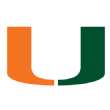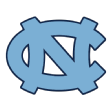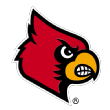ESPN's panel of recruiting experts ranked all 65 Power 5 head coaching jobs by the difficulty of recruiting at each school. Below is a look at the ACC rankings. For the complete 1-65 list, and more on the criteria and tiebreaking procedures for the rankings, click HERE.

1. Florida State Seminoles: 22 out of 25
Favorable geography/local recruiting territory: 5 -- Since 2013, there have been 206 players from the state of Florida ranked in the ESPN 300. During that time, Florida State has owned the momentum in the Sunshine State. There is also easy access along I-10 west to Mobile, Ala., and New Orleans. Tallahassee is also a short drive into South Georgia and only four hours to the Atlanta area.
Recruiting/football budget: 3 -- The Seminoles don’t have the budget of many of their recruiting rivals. With that said, Florida State is a national brand that recruits from coast-to-coast.
Facilities to attract recruits: 4 -- The Seminoles can compete with anyone outside of Alabama and a select few others in the arms race. Doak Campbell Stadium seats 82,300 and is widely recognized as a great gameday atmosphere to attract top talent. The football offices, practice fields and indoor facility are all closely accessible making for an organized set up.
Next-level considerations: 5 -- Since 2010, the Seminoles have had 39 players drafted, including eight first-round selections. Jameis Winston and Deion Sanders are among the many identifiable players who pay dividends in recruiting.
Other intangibles: 5 -- Florida State has three national championships, all in the last 25 years, along with 15 ACC titles and 15 top-10 poll finishes since 1990. There have been three Heisman Trophy winners in that time: Charlie Ward, Chris Weinke and Jameis Winston in 2013.

2. Clemson Tigers: 21 out of 25
Favorable geography/local recruiting territory: 5 -- Since 2006, there have been 442 Power 5 signees from the state of South Carolina. Neighboring states of Georgia and North Carolina are among the best NFL producers per capita as well. Florida and Virginia are also states within short flying distance that are heavily recruited by the Tigers.
Recruiting/football budget: 4 -- At over $617,000 in 2013, when the most recent data was collected, the Tigers have the budget to regularly recruit up and down the Atlantic Coast, throughout the Southeast region and into Texas. They are becoming a national presence under Dabo Swinney.
Facilities to attract recruits: 4 -- Clemson has facilities that can compete with any program, save Alabama. Memorial Stadium is widely considered one of the very best game day atmospheres and touching “Howard’s Rock” and running down the hill to enter games is a major recruiting tool.
Next-level considerations: 4 -- The Tigers have had 29 players drafted since 2010, including five first-round selections. Sammy Watkins is an identifiable player who many national prospects know.
Other intangibles: 3 -- While Clemson hasn’t won a national championship since 1981, and last won the ACC title in 2011, the Tigers have been a consistent Top 25 program since 2000, winning 136 games with nine Top 25 AP Poll finishes. Wins over Florida State, Georgia, Notre Dame, Ohio State and Oklahoma in recent seasons have raised Clemson’s recruiting profile nationally.

3. Miami Hurricanes: 20 out of 25
Favorable geography/local recruiting territory: 5 -- Miami sits in the perfect place to recruit talented football players, with Dade and Broward being the most talented neighboring counties in the country.
Recruiting/football budget: 3 – Miami is a private school, so the budget is not made public. That said, the majority of the Hurricanes’ recruiting is done in-state with some select, national cherry-picking.
Facilities to attract recruits: 2 -- Considering the history and national level of respect for the program’s history, the facilities are amongst the worst in the Power 5. There is not an on-campus stadium with games being played 21 miles from campus and away from the city of Miami. There is not an indoor practice facility (although it can be argued it’s not needed due to generally good weather) and the dorm rooms fall behind the majority of programs the Hurricanes recruit against.
Next-level considerations: 5 -- 30 players have been selected in NFL draft since 2010, including two first-round selections. Ray Lewis and Michael Irvin remain identifiable players for prospects. There have been over 300 total NFL Draft picks from Miami.
Other intangibles: 5 – Say “The U” to almost anyone. They know it’s Miami. The school practically invented swagger and has, arguably, the best recent history in college football, with five national titles since 1983. There have been two Heisman Trophy winners: Vinny Testaverde and Gino Torretta. Miami’s entrance through “The Smoke” is one of the best sights in college football and is often imitated.

4. North Carolina Tar Heels: 17 out of 25
Favorable geography/local recruiting territory: 4 -- North Carolina is one of the top NFL talent producers per capita, and neighbors very talented states of Georgia and Virginia, as well as South Carolina. The Tar Heels also have a national brand, due in large part to basketball, but do have a reach in football across the Southeast region.
Recruiting/football budget: 3 -- At $539,000, the Tar Heels are in the top half of the conference in this category.
Facilities to attract recruits: 3 -- While the football facilities are outdated by today’s standards, they still rank among the top five in the ACC. Kenan Memorial Stadium has been upgraded to 63,000 seats from 57,000 in 1997. The Loudermilk Center for Student Excellence enclosed the stadium in 2011.
Next-level considerations: 3 -- North Carolina has had 23 players drafted since 2010, including five first-round selections. There are currently 24 former players on NFL rosters.
Other intangibles: 4 – “Carolina Blue” is recognized all over the sports word and the university uses a history of great success in basketball to use as a recruiting tool in football. The Tar Heels haven’t won an ACC football title since 1980, and have never won a national championship. Chapel Hill is in the Research Triangle and is considered a top-five public school in the country.

5. Virginia Tech Hokies: 16 out of 25
Favorable geography/local recruiting territory: 4 -- The state of Virginia has produced 665 Power 5 prospects since 2006, and also neighbors talented states of North Carolina and Maryland. Also, Washington, DC, Pennsylvania, Ohio and New Jersey are accessible by car.
Recruiting/football budget: 3 -- Virginia Tech has a recruiting budget to compete with ACC programs. There are time and resources spent recruiting all along the East Coast, as well as a lot of time in Florida and Georgia.
Facilities to attract recruits: 3 -- Lane Stadium is one of the best venues in the ACC. The newly opened indoor facility has brought the Hokies up to par and beyond much of the competition in the conference.
Next-level considerations: 3 -- Virginia Tech has had 18 players drafted since 2010, including two first-round selections.
Other intangibles: 3 -- Virginia Tech became a nationally recognized program under Frank Beamer with 15 Top 25 AP Poll finishes in the last 20 years despite slipping since 2012. Beamer put the Hokies on the map nationally, along with Michael Vick. There have been four ACC titles won since moving to the league in 2005, with the last being in 2010.

6. Louisville Cardinals: 16 out of 25
Favorable geography/local recruiting territory: 3 -- The state of Kentucky has only produced 174 Power 5 conference signees since 2006. The Cardinals rely little on in-state talent, but heavily on talented states in the region such as Georgia, Florida, Alabama, the Mississippi community colleges and neighboring states to the east and Ohio to the north.
Recruiting/football budget: 3 -- The $209,000 2013 budget in 2013 was very small in comparison to the competition in the conference and region, but that budget is growing quickly.
Facilities to attract recruits: 3 -- Louisville has made strides in this area with Papa John’s Cardinal Stadium having expanded in 2010. There have also been recent upgrades to the Howard Schnellenberger Complex, and many other upgrades in athletic facilities.
Next-level considerations: 3 -- Louisville has had 18 players selected in the NFL Draft since 2010, and four first-round selections including QB Teddy Bridgewater.
Other intangibles: 4 -- While Louisville has made significant strides in terms of facilities, the Cardinals lack the winning history and ideal location to be a consistent national presence. Athletics director Tom Jurich has done a masterful job upgrading the school’s athletics as a whole, and has built Louisville into one that can contend in a Power 5 conference in many sports with a top-four budget in the ACC. The Cardinals also have a very passionate fan base.

7. Virginia Cavaliers: 16 out of 25
Favorable geography/local recruiting territory: 4 -- The state of Virginia has produced 665 Power 5 prospects since 2006, and also neighbors talented states of North Carolina and Maryland, as well as Washington, D.C. Pennsylvania, Ohio and New Jersey are also accessible by car. Virginia is almost identical to rival Virginia Tech as it relates to geographical recruiting footprint, with the exception that the Cavaliers are closer to the Washington, D.C. area, as well as the all-important Hampton Roads area where the bulk of the in-state talent resides.
Recruiting/football budget: 3 -- At only $300,000, the Cavaliers have the budget to compete with the competition in the ACC, but not nationally. With that said, the travel for the staff on the trail is along the Eastern Seaboard, and into Georgia and Florida, with some toes dipped into Texas on occasion.
Facilities to attract recruits: 3 -- Virginia quietly has impressive facilities that can compete with any in the ACC save Florida State and Clemson. The George Welsh Indoor facility opened in 2013, and has pushed the Cavaliers to the top third of the conference in this category.
Next-level considerations: 3 -- There have been nine players selected in the NFL draft since 2010. With that said, there are currently 27 players in the NFL that played for the Cavaliers.
Other intangibles: 3 -- Virginia is a terrific university that blends strong academics and athletics very well, which is a positive sell in recruiting. There isn’t a history of winning to recruit with, however, as the Cavaliers have never won a national title, haven’t won the ACC since 1995 (shared), don’t have many individual award winners and haven’t finished in the Top 25 of the Coaches or AP Poll since 2004.

8. Georgia Tech Yellow Jackets: 16 out of 25
Favorable geography/local recruiting territory: 5 -- The Yellow Jackets are centered in one of the most-talented cities in the country, Atlanta. That, along with being in Georgia, and neighboring Florida, Alabama, North Carolina and South Carolina place Georgia Tech in a prime position to recruit talent.
Recruiting/football budget: 4 -- The Yellow Jackets have a budget that is huge and compares with the powerhouses nationally. While recruiting the home state and neighboring Florida could fill a class, the academic requirements make Georgia Tech a program that has to branch out throughout the region and along the Eastern seaboard.
Facilities to attract recruits: 3 -- Georgia Tech is in the middle of the pack in the ACC. Bobby Dodd Stadium seats 55,000, and the Jackets have an indoor practice facility.
Next-level considerations: 2 -- Georgia Tech has had 12 players selected in the NFL Draft since 2010, including two first-round selections. Calvin Johnson remains an identifiable player by prospects.
Other intangibles: 2 -- Georgia Tech has been recruiting since 2007 with the understanding that 20 percent of the class could be filled with “exceptions,” meaning players who did not meet Georgia Tech admission standards, but met NCAA standards. Still, it's a tough place academically.

9. Pittsburgh Panthers: 15 out of 25
Favorable geography/local recruiting territory: 4 -- Pennsylvania has produced 763 Power 5 prospects since 2006. The Steel City, itself, is a talented city that has the ability to supply a third of Pittsburgh classes on an annual basis. Neighboring Ohio, Maryland and New Jersey, Pittsburgh has three more talented states nearby. In the classes of 2015 and 2016 thus far, 12 of 25 commitments are from in-state. Six are from Ohio and two from New Jersey.
Recruiting/football budget: 3 -- Pittsburgh sits in the lower half of the conference in recruiting budget, but makes the most of it spending ample time and resources recruiting in Florida, along with spot recruiting in Virginia and Texas.
Facilities to attract recruits: 3 -- While Pittsburgh doesn’t have an on-campus stadium, Heinz Field is only five miles from campus and in the city center. Upgrades to the locker room, team room and players’ lounge have placed the Panthers on par with their ACC competition.
Next-level considerations: 3 -- Pittsburgh has had 11 players selected in the NFL draft since 2010, including two first-round selections. Larry Fitzgerald remains an identifiable player to prospects. The Panthers do have a rich history of NFL stars such as Mike Ditka, Dan Marino, Heisman Trophy winner Tony Dorsett and Mark May.
Other intangibles: 2 -- Pittsburgh has become known as a stepping stone job after Todd Graham and Paul Chryst left for “better" jobs. That has caused a lack of continuity in the program in recent years, and a negative perception that Pat Narduzzi is working to change. Pittsburgh last won the national championship in 1976.

10. NC State Wolfpack: 15 out of 25
Favorable geography/local recruiting territory: 4 -- The Wolfpack have to battle North Carolina for supremacy in-state, and fend off the likes of Georgia, South Carolina, Clemson, Virginia Tech and national programs such as Ohio State and Notre Dame. The ability to recruit neighboring Georgia and Virginia enhances the recruiting territory.
Recruiting/football budget: 3 -- NC State is very similar to North Carolina in recruiting budget, and spends more than both Virginia schools in the ACC.
Facilities to attract recruits: 3 -- While NC State plays at an off-campus stadium, the facilities are among the conference’s best otherwise.
Next-level considerations: 3 -- The Wolfpack have had 12 players selected in the NFL draft since 2010.
Other intangibles: 2 -- NC State has sold out home games nine years in a row, enjoying terrific fan support. That said, the Wolfpack have not won the ACC since 1979 and have never won a national championship. They also have a losing record all-time in league play.

11. Duke Blue Devils: 13 out of 25
Favorable geography/local recruiting territory: 4 -- While Duke recruits the home state, Duke’s academic requirements force it to recruit from coast-to-coast to find the right fits. Having Georgia and Virginia as neighboring states does help ease some of the recruiting pressure.
Recruiting/football budget: 3 -- Duke is a private school, so budgets aren’t made public. The budget is there, however, to scour the country for the best student-athletes the staff can find.
Facilities to attract recruits: 2 -- Wallace Wade Stadium only seats 33,941, and simply can’t compete with the game day atmosphere of many others. The Yoh Football Center and indoor practice facility help offset the lack of game day atmosphere. Duke ranks near the bottom of the conference in this category.
Next-level considerations: 2 -- Duke has had four players drafted since 2010, including one first-round selection.
Other intangibles: 2 -- Tough academic requirements make recruiting at Duke a far reaching, national job which has proven to be tough over time.

12. Syracuse Orange: 12 out of 25
Favorable geography/local recruiting territory: 2 -- The state of New York has produced just 223 Power 5 prospects since 2006, and is bordered to the east by other non-producers. While Pennsylvania and New Jersey neighbor to the south, beating the likes of Penn State, Michigan, Ohio State, Notre Dame and many others for desired Power 5 prospects is a very difficult task.
Recruiting/football budget: 3 -- Syracuse has a recruiting budget that is competitive in the conference. It spends time and resources recruiting in the Southeast region, especially Florida, as well as along the Eastern seaboard.
Facilities to attract recruits: 3 -- The Orange play in the Carrier Dome, with a seating of nearly 50,000. A new indoor practice facility, as well as other upgrades within the program have set up Syracuse to compete on the trail.
Next-level considerations: 2 -- Syracuse has had 11 players drafted since 2010, including two first-round selections.
Other intangibles: 2 -- Syracuse has not finished ranked in the final AP Top 25 poll since 2001, and hasn’t had a top-10 finish since 1992. The last conference title was in 2012 (shared), the Orange’s last season in the Big East. There isn’t notable history to recruit to for the Orange staff.

13. Wake Forest Demon Deacons: 12 out of 25
Favorable geography/local recruiting territory: 4 -- As noted, North Carolina produces quite a bit of talent. The problem for Wake Forest is its battle with UNC, NC State and Duke in-state, and many national powers to accumulate the talent needed to consistently compete in the ACC.
Recruiting/football budget: 2 -- Since Wake Forest is a private school, their recruiting budget numbers aren’t made public.
Facilities to attract recruits: 2 -- The facilities have been upgraded on campus, but are not up to par with the competition in the conference.
Next-level considerations: 2 -- Wake Forest has had nine players drafted since 2010, including one first-round selection.
Other intangibles: 2 -- Wake Forest doesn’t have a winning history, but did win the ACC in 2006. The Demon Deacons have never won a national title, and have only finished in the Top 25 twice since 1990.

14. Boston College Eagles: 10 out of 25
Favorable geography/local recruiting territory: 1 -- There are only 17 players from Massachusetts currently on the roster. Without much in-state talent to draw from, recruiting all along the Eastern Seaboard and into Pennsylvania and Ohio is vital.
Recruiting/football budget: 3 -- Boston College is a private university, therefore the recruiting budget is not made public. With that said, the recruiting budget must allow for national recruiting due in large part to unfavorable geography.
Facilities to attract recruits: 2 -- The Eagles are in the bottom-third of facilities in the ACC. Alumni Stadium seats 44,500, having been renovated in 1995. The Yawkey Athletics Center opened in 2005.
Next-level considerations: 2 -- There have been 10 players taken in NFL draft since 2010. The Eagles' most identifiable former players are Heisman Trophy winner Doug Flutie, and currently Matt Ryan, Luke Kuechly and B.J. Raji.
Other intangibles: 2 -- Boston College hasn’t won a national title since 1940, and its last conference title was in 2004 as a member of the Big East. Since the 2009 season, the Eagles are just 38-48 overall, including 0-4 in bowl games.

NR. Notre Dame Fighting Irish: 21 out of 25
Favorable geography/local recruiting territory: 3 -- There’s a reason Notre Dame recruits nationally. Yes, it’s just a stone’s throw from Chicago and the hotbed that’s there, but everybody in the Big Ten recruits there and it’s not easy for even Notre Dame to win over every kid from the Windy City. Indiana isn’t a huge talent hotbed, but the Irish do get the pick of the litter in their own backyard. Notre Dame is also not too far away from other better talent-rich states like Michigan and Ohio, so that helps beef up its footprint somewhat.
Recruiting/football budget: 4 -- Notre Dame is definitely focused on football first and foremost, so the Irish have never hurt for anything they need to maintain their football and recruiting operations. With Notre Dame’s national recruiting base, it does have to spend a lot of money for travel, so there is definitely a focus on spending in recruiting.
Facilities to attract recruits: 4 -- Notre Dame Stadium doesn’t have all the bells and whistles that other elite stadiums have, but what it lacks in ribbon boards and signage, it more than makes up in tradition and history. Those are things that even today’s tech-savvy recruits respond to. The Gug, Notre Dame’s football central hub, has been around for 10 years, but still has all the modern conveniences the program needs.
Next-level considerations: 5 -- There are few programs that go hand-in-hand with the NFL than Notre Dame. The school is famous for sending players year after year on to the NFL draft.
Other intangibles: 5 -- It’s Notre Dame. The education alone is something that sells to recruits and moms and dads all over the country, but also the major offerings are something that appeals to all types. The fan support is unlike anywhere else in the country. -- Jeremy Crabtree
